Yifan Chang
A High-Quality Dataset and Reliable Evaluation for Interleaved Image-Text Generation
Jun 11, 2025Abstract:Recent advancements in Large Multimodal Models (LMMs) have significantly improved multimodal understanding and generation. However, these models still struggle to generate tightly interleaved image-text outputs, primarily due to the limited scale, quality and instructional richness of current training datasets. To address this, we introduce InterSyn, a large-scale multimodal dataset constructed using our Self-Evaluation with Iterative Refinement (SEIR) method. InterSyn features multi-turn, instruction-driven dialogues with tightly interleaved imagetext responses, providing rich object diversity and rigorous automated quality refinement, making it well-suited for training next-generation instruction-following LMMs. Furthermore, to address the lack of reliable evaluation tools capable of assessing interleaved multimodal outputs, we introduce SynJudge, an automatic evaluation model designed to quantitatively assess multimodal outputs along four dimensions: text content, image content, image quality, and image-text synergy. Experimental studies show that the SEIR method leads to substantially higher dataset quality compared to an otherwise identical process without refinement. Moreover, LMMs trained on InterSyn achieve uniform performance gains across all evaluation metrics, confirming InterSyn's utility for advancing multimodal systems.
SridBench: Benchmark of Scientific Research Illustration Drawing of Image Generation Model
May 28, 2025Abstract:Recent years have seen rapid advances in AI-driven image generation. Early diffusion models emphasized perceptual quality, while newer multimodal models like GPT-4o-image integrate high-level reasoning, improving semantic understanding and structural composition. Scientific illustration generation exemplifies this evolution: unlike general image synthesis, it demands accurate interpretation of technical content and transformation of abstract ideas into clear, standardized visuals. This task is significantly more knowledge-intensive and laborious, often requiring hours of manual work and specialized tools. Automating it in a controllable, intelligent manner would provide substantial practical value. Yet, no benchmark currently exists to evaluate AI on this front. To fill this gap, we introduce SridBench, the first benchmark for scientific figure generation. It comprises 1,120 instances curated from leading scientific papers across 13 natural and computer science disciplines, collected via human experts and MLLMs. Each sample is evaluated along six dimensions, including semantic fidelity and structural accuracy. Experimental results reveal that even top-tier models like GPT-4o-image lag behind human performance, with common issues in text/visual clarity and scientific correctness. These findings highlight the need for more advanced reasoning-driven visual generation capabilities.
IA-T2I: Internet-Augmented Text-to-Image Generation
May 21, 2025Abstract:Current text-to-image (T2I) generation models achieve promising results, but they fail on the scenarios where the knowledge implied in the text prompt is uncertain. For example, a T2I model released in February would struggle to generate a suitable poster for a movie premiering in April, because the character designs and styles are uncertain to the model. To solve this problem, we propose an Internet-Augmented text-to-image generation (IA-T2I) framework to compel T2I models clear about such uncertain knowledge by providing them with reference images. Specifically, an active retrieval module is designed to determine whether a reference image is needed based on the given text prompt; a hierarchical image selection module is introduced to find the most suitable image returned by an image search engine to enhance the T2I model; a self-reflection mechanism is presented to continuously evaluate and refine the generated image to ensure faithful alignment with the text prompt. To evaluate the proposed framework's performance, we collect a dataset named Img-Ref-T2I, where text prompts include three types of uncertain knowledge: (1) known but rare. (2) unknown. (3) ambiguous. Moreover, we carefully craft a complex prompt to guide GPT-4o in making preference evaluation, which has been shown to have an evaluation accuracy similar to that of human preference evaluation. Experimental results demonstrate the effectiveness of our framework, outperforming GPT-4o by about 30% in human evaluation.
Rethinking Lanes and Points in Complex Scenarios for Monocular 3D Lane Detection
Mar 08, 2025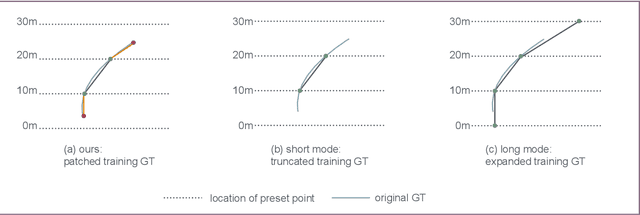
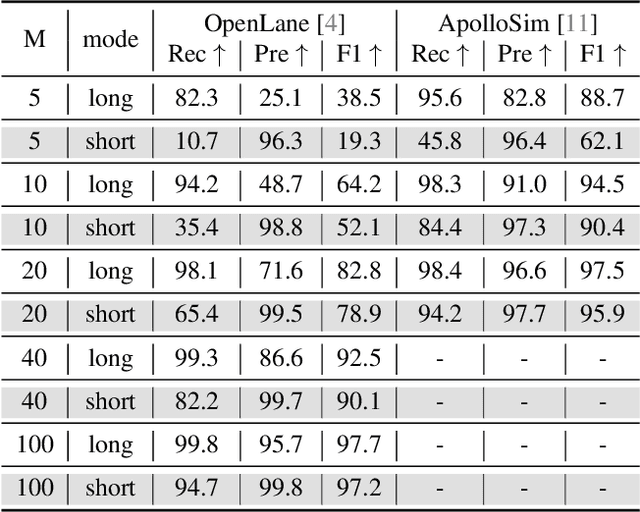
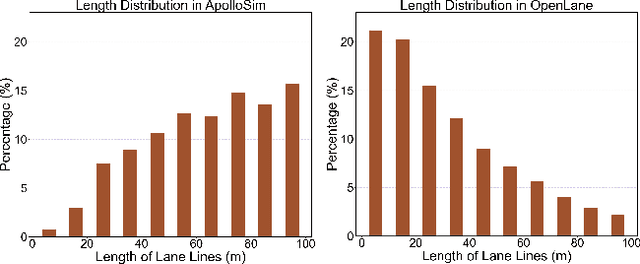

Abstract:Monocular 3D lane detection is a fundamental task in autonomous driving. Although sparse-point methods lower computational load and maintain high accuracy in complex lane geometries, current methods fail to fully leverage the geometric structure of lanes in both lane geometry representations and model design. In lane geometry representations, we present a theoretical analysis alongside experimental validation to verify that current sparse lane representation methods contain inherent flaws, resulting in potential errors of up to 20 m, which raise significant safety concerns for driving. To address this issue, we propose a novel patching strategy to completely represent the full lane structure. To enable existing models to match this strategy, we introduce the EndPoint head (EP-head), which adds a patching distance to endpoints. The EP-head enables the model to predict more complete lane representations even with fewer preset points, effectively addressing existing limitations and paving the way for models that are faster and require fewer parameters in the future. In model design, to enhance the model's perception of lane structures, we propose the PointLane attention (PL-attention), which incorporates prior geometric knowledge into the attention mechanism. Extensive experiments demonstrate the effectiveness of the proposed methods on various state-of-the-art models. For instance, in terms of the overall F1-score, our methods improve Persformer by 4.4 points, Anchor3DLane by 3.2 points, and LATR by 2.8 points. The code will be available soon.
AndroidWorld: A Dynamic Benchmarking Environment for Autonomous Agents
May 23, 2024



Abstract:Autonomous agents that execute human tasks by controlling computers can enhance human productivity and application accessibility. Yet, progress in this field will be driven by realistic and reproducible benchmarks. We present AndroidWorld, a fully functioning Android environment that provides reward signals for 116 programmatic task workflows across 20 real world Android applications. Unlike existing interactive environments, which provide a static test set, AndroidWorld dynamically constructs tasks that are parameterized and expressed in natural language in unlimited ways, thus enabling testing on a much larger and realistic suite of tasks. Reward signals are derived from the computer's system state, making them durable across task variations and extensible across different apps. To demonstrate AndroidWorld's benefits and mode of operation, we introduce a new computer control agent, M3A. M3A can complete 30.6% of the AndroidWorld's tasks, leaving ample room for future work. Furthermore, we adapt a popular desktop web agent to work on Android, which we find to be less effective on mobile, suggesting future research is needed to achieve universal, cross-domain agents. Finally, we conduct a robustness analysis by testing M3A against a range of task variations on a representative subset of tasks, demonstrating that variations in task parameters can significantly alter the complexity of a task and therefore an agent's performance, highlighting the importance of testing agents under diverse conditions. AndroidWorld and the experiments in this paper are available at https://github.com/google-research/android_world.
Reviewing continual learning from the perspective of human-level intelligence
Nov 23, 2021
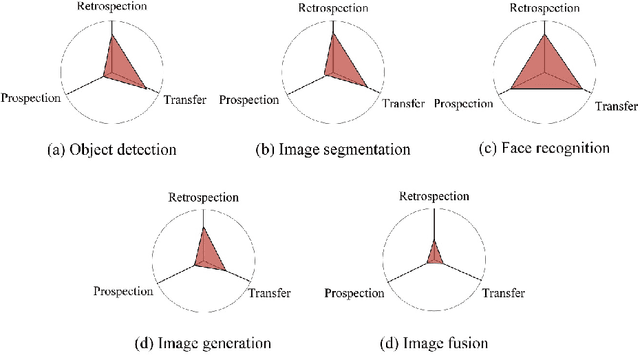
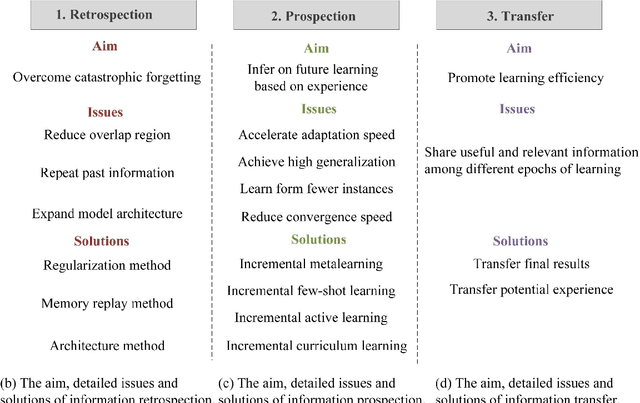
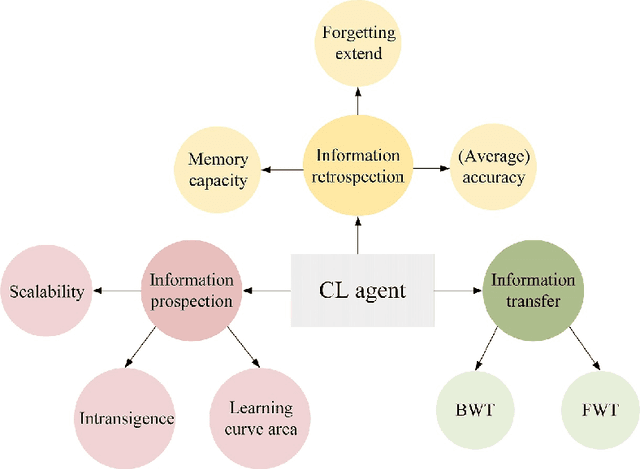
Abstract:Humans' continual learning (CL) ability is closely related to Stability Versus Plasticity Dilemma that describes how humans achieve ongoing learning capacity and preservation for learned information. The notion of CL has always been present in artificial intelligence (AI) since its births. This paper proposes a comprehensive review of CL. Different from previous reviews that mainly focus on the catastrophic forgetting phenomenon in CL, this paper surveys CL from a more macroscopic perspective based on the Stability Versus Plasticity mechanism. Analogous to biological counterpart, "smart" AI agents are supposed to i) remember previously learned information (information retrospection); ii) infer on new information continuously (information prospection:); iii) transfer useful information (information transfer), to achieve high-level CL. According to the taxonomy, evaluation metrics, algorithms, applications as well as some open issues are then introduced. Our main contributions concern i) rechecking CL from the level of artificial general intelligence; ii) providing a detailed and extensive overview on CL topics; iii) presenting some novel ideas on the potential development of CL.
Adversarial Feature Genome: a Data Driven Adversarial Examples Recognition Method
Dec 25, 2018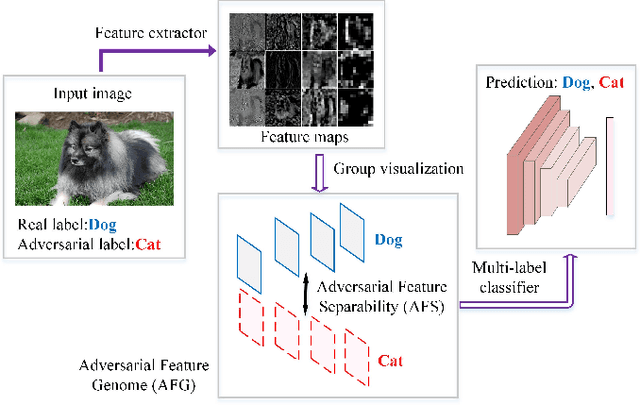
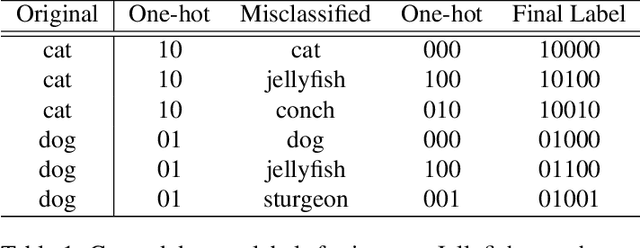
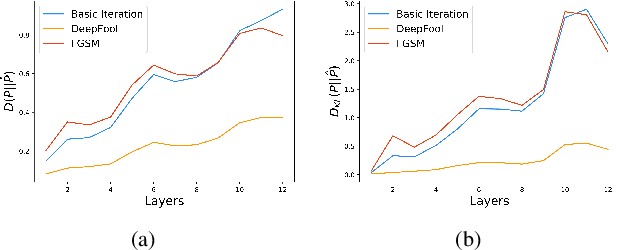

Abstract:Convolutional neural networks (CNNs) are easily spoofed by adversarial examples which lead to wrong classification result. Most of the one-way defense methods focus only on how to improve the robustness of a CNN or to identify adversarial examples. They are incapable of identifying and correctly classifying adversarial examples simultaneously due to the lack of an effective way to quantitatively represent changes in the characteristics of the sample within the network. We find that adversarial examples and original ones have diverse representation in the feature space. Moreover, this difference grows as layers go deeper, which we call Adversarial Feature Separability (AFS). Inspired by AFS, we propose an Adversarial Feature Genome (AFG) based adversarial examples defense framework which can detect adversarial examples and correctly classify them into original category simultaneously. First, we extract the representations of adversarial examples and original ones with labels by the group visualization method. Then, we encode the representations into the feature database AFG. Finally, we model adversarial examples recognition as a multi-label classification or prediction problem by training a CNN for recognizing adversarial examples and original examples on the AFG. Experiments show that the proposed framework can not only effectively identify the adversarial examples in the defense process, but also correctly classify adversarial examples with mean accuracy up to 63\%. Our framework potentially gives a new perspective, i.e. data-driven way, to adversarial examples defense. We believe that adversarial examples defense research may benefit from a large scale AFG database which is similar to ImageNet. The database and source code can be visited at https://github.com/lehaifeng/Adversarial_Feature_Genome.
Optimizing Waiting Thresholds Within A State Machine
Oct 08, 2018
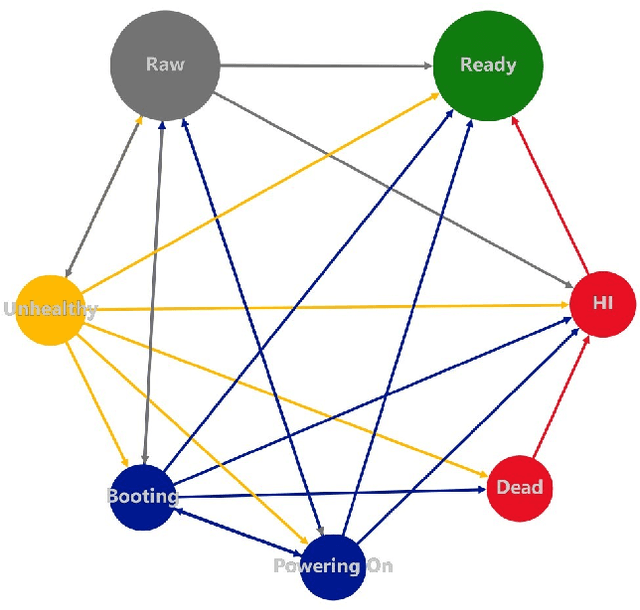
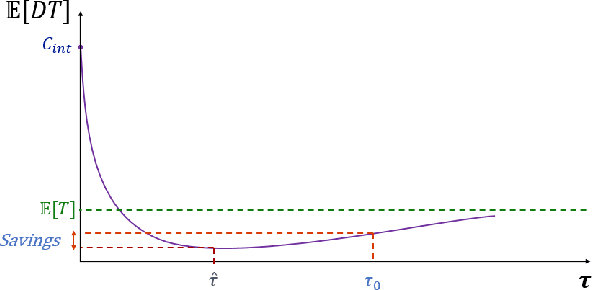

Abstract:Azure (the cloud service provided by Microsoft) is composed of physical computing units which are called nodes. These nodes are controlled by a software component called Fabric Controller (FC), which can consider the nodes to be in one of many different states such as Ready, Unhealthy, Booting, etc. Some of these states correspond to a node being unresponsive to FCs requests. When a node goes unresponsive for more than a set threshold, FC intervenes and reboots the node. We minimized the downtime caused by the intervention threshold when a node switches to the Unhealthy state by fitting various heavy-tail probability distributions. We consider using features of the node to customize the organic recovery model to the individual nodes that go unhealthy. This regression approach allows us to use information about the node like hardware, software versions, historical performance indicators, etc. to inform the organic recovery model and hence the optimal threshold. In another direction, we consider generalizing this to an arbitrary number of thresholds within the node state machine (or Markov chain). When the states become intertwined in ways that different thresholds start affecting each other, we can't simply optimize each of them in isolation. For best results, we must consider this as an optimization problem in many variables (the number of thresholds). We no longer have a nice closed form solution for this more complex problem like we did with one threshold, but we can still use numerical techniques (gradient descent) to solve it.
 Add to Chrome
Add to Chrome Add to Firefox
Add to Firefox Add to Edge
Add to Edge